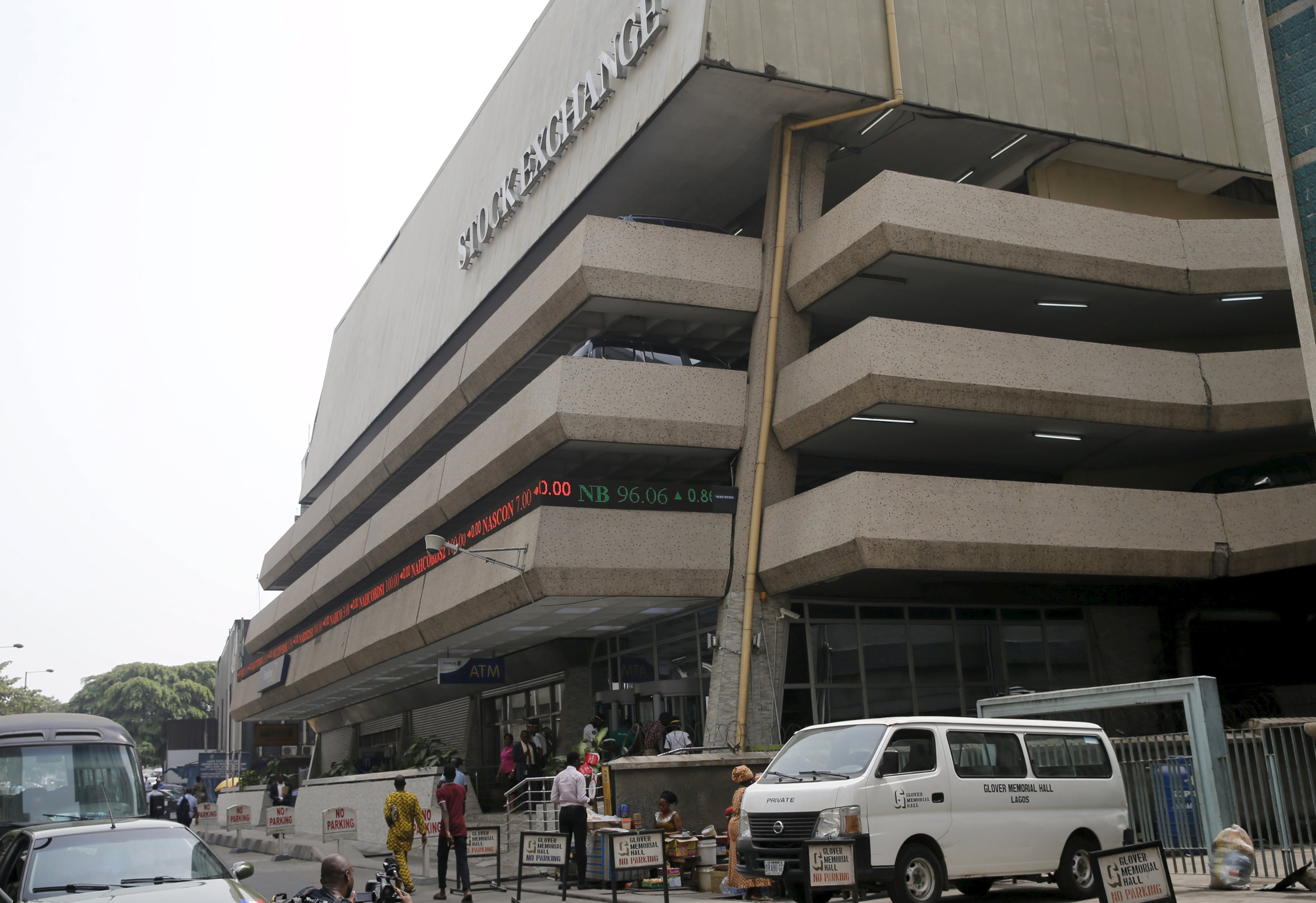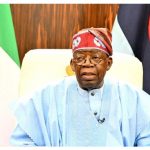Economy
How to Make Financial Presentations Tell a Story

Financial presentations are not the greatest friends of time. A report that spends far too long pulling numbers from various spreadsheets and sourcing them together is boring to even people in finance—and a great direction if you want to lose your audience. But in a landscape where financial presentations are decidedly ho-hum, how can you craft one that reveals necessary fiscal information while keeping everyone engaged?
Basic storytelling is a fine way to start. It allows you to explain the “why” behind the numbers and can be the difference between a bland presentation and one people remember.
Begin with a Clear Narrative Structure
Every good story has a beginning, middle, and end—Cinderella, Hansel & Gretal, and yes, even your financial presentation. Start by defining the problem or challenge, then walk your audience through the data, and finish with a conclusion that presents your solution or recommendation. This doubles as a more engaging presentation format, and a way to help audience members follow your train of thought more easily—critical when displaying slides full of digits.
Think of your financial presentation as a story arc. In the beginning, you set the stage, explaining why the numbers you’re about to share matter. In the middle, you dig into the data, revealing key insights. Finally, you tie it all together in the conclusion, leaving your audience with a clear takeaway or action plan.
Use Visuals to Bring Data to Life
Financial data can be dense and overwhelming, especially for non-financial experts who may frequent your presentations. Visuals like graphs, charts, and infographics can help make your data more digestible for visual learners. Rows of numbers can be overwhelming for your audience, so use visuals to highlight trends, comparisons, or important figures that are key to your story.
It’s not just about throwing charts onto slides. You need to carefully choose visuals that complement your narrative. For instance, if you’re presenting financial performance over time, a simple line graph might work best. If comparing departments or products, bar charts do a far better job. Case in point: avoid clutter—use visuals to make complex information clear and accessible.
Structure Your Printed Content for Clarity
While visuals on screen are essential, printed content can add another layer of clarity, particularly when dealing with detailed financial data that can’t all be digested in a single sitting. Presentation folder inserts are an excellent tool for providing supplementary information in a structured and accessible way. Instead of bombarding your audience with too much information, you can guide them through the critical takeaways while offering inserts for deeper exploration.
For example, attaching a stitched, printed brochure to your presentation folder’s spine helps you structure your printed materials in a crafted way. This and various presentation folder add-ons make it easier for clients to follow along precisely in the order you intended.
Engage with Storytelling Techniques to Highlight Key Financial Takeaways
Just as a good story has moments of climax and resolution, your financial presentation should highlight information in a way that glues everyone’s attention. Think of major financial data points—like revenue growth or cost savings—as the plot twists in your story. These are the moments where you should zoom in, emphasizing their importance and making sure your audience grasps the full significance.
You can use storytelling techniques like contrasts (before vs. after), building tension (forecasting negative consequences if action isn’t taken), or framing milestones and projections as chapters in your company’s growth journey. By weaving these insights into a larger narrative, you give your numbers context, making them not just more understandable, but more memorable.
End with a Strong Call to Action (CTA)
The difference between a story that ‘has an ending’ and a story that ‘ends’ is the difference between a soft landing and a hard landing. A soft landing is subtle, ending your presentation with a satisfying conclusion; hard landings end abruptly, appearing graceless and hardly inspiring a meaningful call to action (CTA).
In a financial presentation, ending ‘softly’ doesn’t mean going out with a whimper; rather, it’s all about including a natural-sounding call to action that translates into follow-ups. Once you’ve walked your audience through the data and told the story of your financial performance, guide them toward a decision or next step.
Important to note is that a strong CTA isn’t just about what you want—it’s about persuading your audience that taking action will lead to the outcome they desire, based on the story you’ve just told.
From Numbers to Narratives
The role of any CFO is to tell your company’s financial story, condensing data that can come from many places into cohesive and engaging plot lines. An excellent financial presentation does just that. It is by turns interesting, interactive, and simple—as these tips have hopefully shown.
Remember, your audience may not always be as comfortable with financial figures as you are. But with these techniques, you can guide them through your presentation with ease, ensuring they both understand your message and are motivated to act on it.
Economy
Customs Street Chalks up 0.12% on Santa Claus Rally

By Dipo Olowookere
The Nigerian Exchange (NGX) Limited witnessed Santa Claus rally on Wednesday after it closed higher by 0.12 per cent.
Strong demand for Nigerian stocks lifted the All-Share Index (ASI) by 185.70 points during the pre-Christmas trading session to 153,539.83 points from 153,354.13 points.
In the same vein, the market capitalisation expanded at midweek by N118 billion to N97.890 trillion from the preceding day’s N97.772 trillion.
Investor sentiment on Customs Street remained bullish after closing with 36 appreciating equities and 22 depreciating equities, indicating a positive market breadth index.
Guinness Nigeria chalked up 9.98 per cent to trade at N318.60, Austin Laz improved by 9.97 per cent to N3.20, International Breweries expanded by 9.85 per cent to N14.50, Transcorp Hotels rose by 9.83 per cent to N170.90, and Aluminium Extrusion grew by 9.73 per cent to N16.35.
On the flip side, Legend Internet lost 9.26 per cent to close at N4.90, AXA Mansard shrank by 7.14 per cent to N13.00, Jaiz Bank declined by 5.45 per cent to N4.51, MTN Nigeria weakened by 5.21 per cent to N504.00, and NEM Insurance crashed by 4.74 per cent to N24.10.
Yesterday, a total of 1.8 billion shares valued at N30.1 billion exchanged hands in 19,372 deals versus the 677.4 billion shares worth N20.8 billion traded in 27,589 deals in the previous session, implying a slump in the number of deals by 29.78 per cent, and a surge in the trading volume and value by 165.72 per cent and 44.71 per cent apiece.
Abbey Mortgage Bank was the most active equity for the day after it sold 1.1 billion units worth N7.1 billion, Sterling Holdings traded 127.1 million units valued at N895.9 million, Custodian Investment exchanged 115.0 million units for N4.5 billion, First Holdco transacted 40.9 million units valued at N2.2 billion, and Access Holdings traded 38.2 million units worth N783.3 million.
Economy
Yuletide: Rite Foods Reiterates Commitment to Quality, Innovation

By Adedapo Adesanya
Nigerian food and beverage company, Rite Foods Limited, has extended warm Yuletide greetings to Nigerians as families and communities worldwide come together to celebrate the Christmas season and usher in a new year filled with hope and renewed possibilities.
In a statement, Rite Foods encouraged consumers to savour these special occasions with its wide range of quality brands, including the 13 variants of Bigi Carbonated Soft Drinks, premium Bigi Table Water, Sosa Fruit Drink in its refreshing flavours, the Fearless Energy Drink, and its tasty sausage rolls — all produced in a world-class facility with modern technology and global best practices.
Speaking on the season, the Managing Director of Rite Foods Limited, Mr Seleem Adegunwa, said the company remains deeply committed to enriching the lives of consumers beyond refreshment. According to him, the Yuletide period underscores the values of generosity, unity, and gratitude, which resonate strongly with the company’s philosophy.
“Christmas is a season that reminds us of the importance of giving, togetherness, and gratitude. At Rite Foods, we are thankful for the continued trust of Nigerians in our brands. This season strengthens our resolve to consistently deliver quality products that bring joy to everyday moments while contributing positively to society,” Mr Adegunwa stated.
He noted that the company’s steady progress in brand acceptance, operational excellence, and responsible business practices reflects a culture of continuous improvement, innovation, and responsiveness to consumer needs. These efforts, he said, have further strengthened Rite Foods’ position as a proudly Nigerian brand with growing relevance and impact across the country.
Mr Adegunwa reaffirmed that Rite Foods will continue to invest in research and development, efficient production processes, and initiatives that support communities, while maintaining quality standards across its product portfolio.
“As the year comes to a close, Rite Foods Limited wishes Nigerians a joyful Christmas celebration and a prosperous New Year filled with peace, progress, and shared success.”
Economy
Naira Appreciates to N1,443/$1 at Official FX Market

By Adedapo Adesanya
The Naira closed the pre-Christmas trading day positive after it gained N6.61 or 0.46 per cent against the US Dollar in the Nigerian Autonomous Foreign Exchange Market (NAFEM) on Wednesday, December 24, trading at N1,443.38/$1 compared with the previous day’s N1,449.99/$1.
Equally, the Naira appreciated against the Pound Sterling in the same market segment by N1.30 to close at N1,949.57/£1 versus Tuesday’s closing price of N1,956.03/£1 and gained N2.94 on the Euro to finish at N1,701.31/€1 compared with the preceding day’s N1,707.65/€1.
At the parallel market, the local currency maintained stability against the greenback yesterday at N1,485/$1 and also traded flat at the GTBank forex counter at N1,465/$1.
Further support came as the Central Bank of Nigeria (CBN) funded international payments with additional $150 million sales to banks and authorised dealers at the official window.
This helped eased pressure on the local currency, reflecting a steep increase in imports. Market participants saw a sequence of exchange rate swings amidst limited FX inflows.
Last week, the apex bank led the pack in terms of FX supply into the market as total inflows fell by about 50 per cent week on week from $1.46 billion in the previous week.
Foreign portfolio investors’ inflows ranked behind exporters and the CBN supply, but there was support from non-bank corporate Dollar volume.
As for the cryptocurrency market, it witnessed a slight recovery as tokens struggled to attract either risk-on enthusiasm or defensive flows.
The inertia follows a sharp reversal earlier in the quarter. A heavy selloff in October pulled Bitcoin and other coins down from record levels, leaving BTC roughly down by 30 per cent since that period and on track for its weakest quarterly performance since the second quarter of 2022. But on Wednesday, its value went up by 0.9 per cent to $87,727.35.
Further, Ripple (XRP) appreciated by 1.7 per cent to $1.87, Cardano (ADA) expanded by 1.2 per cent to $0.3602, Dogecoin (DOGE) grew by 1.1 per cent to $0.1282, Litecoin (LTC) also increased by 1.1 per cent to $76.57, Solana (SOL) soared by 1.0 per cent to $122.31, Binance Coin (BNB) rose by 0.6 per cent to $842.37, and Ethereum (ETH) added 0.3 per cent to finish at $2,938.83, while the US Dollar Tether (USDT) and the US Dollar Coin (USDC) remained unchanged at $1.00 each.
-

 Feature/OPED6 years ago
Feature/OPED6 years agoDavos was Different this year
-
Travel/Tourism9 years ago
Lagos Seals Western Lodge Hotel In Ikorodu
-

 Showbiz3 years ago
Showbiz3 years agoEstranged Lover Releases Videos of Empress Njamah Bathing
-

 Banking8 years ago
Banking8 years agoSort Codes of GTBank Branches in Nigeria
-

 Economy3 years ago
Economy3 years agoSubsidy Removal: CNG at N130 Per Litre Cheaper Than Petrol—IPMAN
-

 Banking3 years ago
Banking3 years agoFirst Bank Announces Planned Downtime
-

 Banking3 years ago
Banking3 years agoSort Codes of UBA Branches in Nigeria
-

 Sports3 years ago
Sports3 years agoHighest Paid Nigerian Footballer – How Much Do Nigerian Footballers Earn













